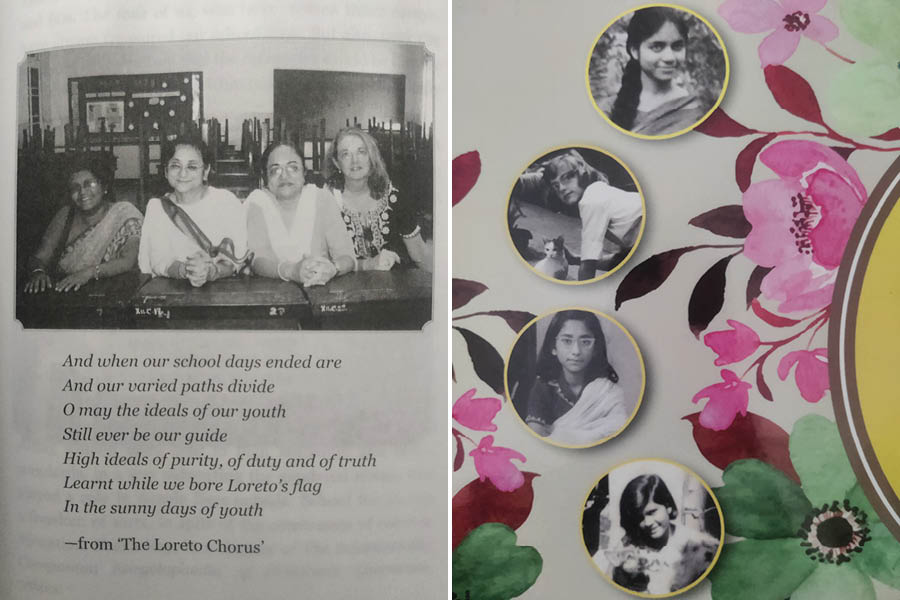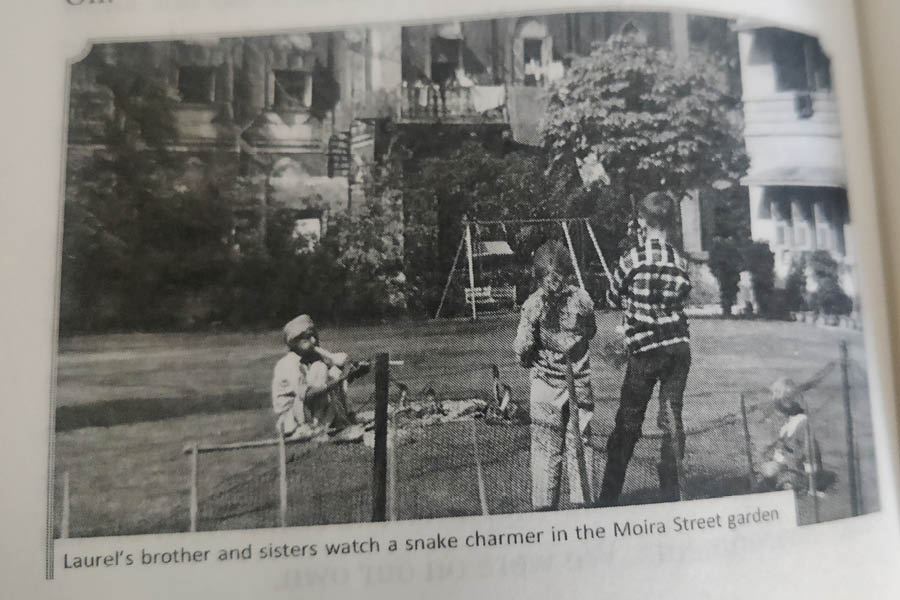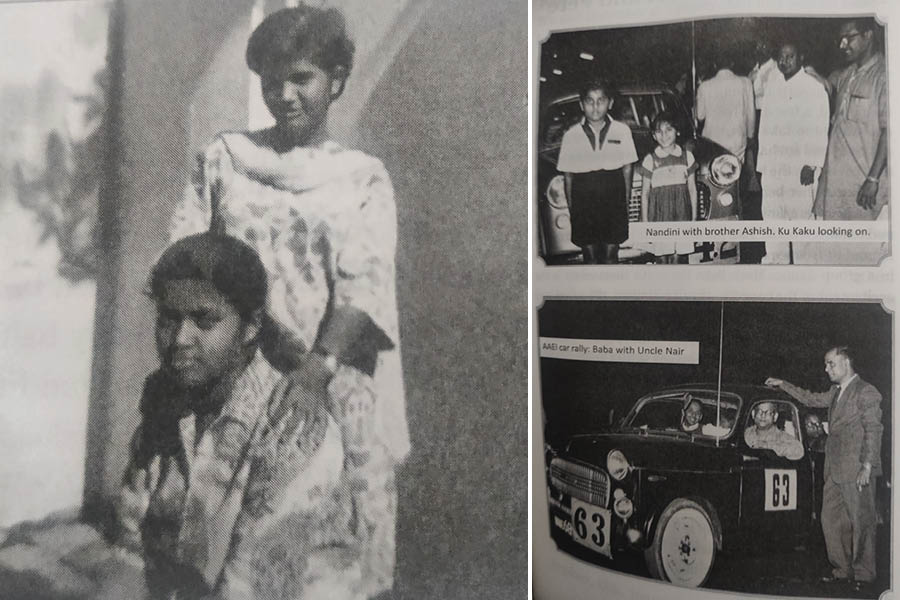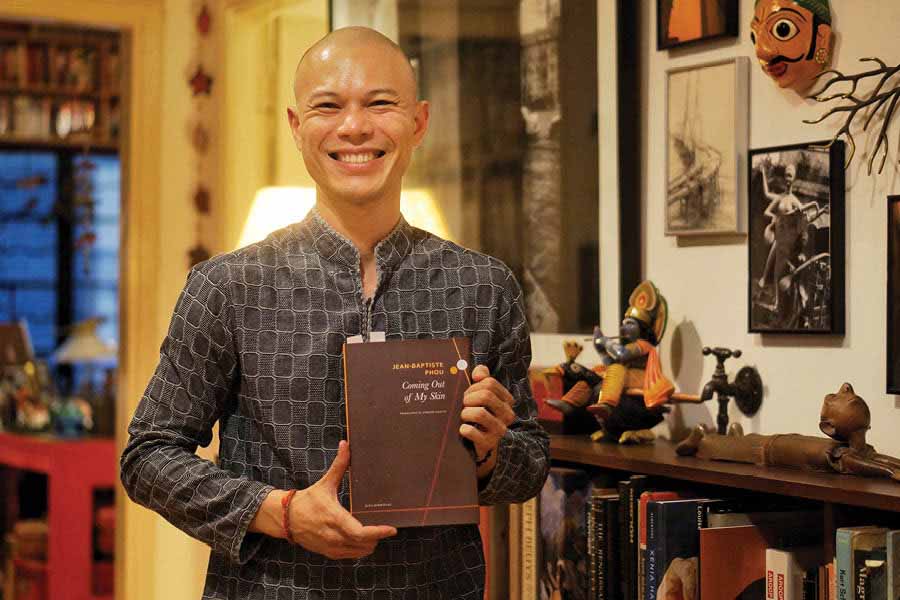What does friendship look like after five decades? Krishna Banerjee Mukherji, Laurel Steele, Nandini Roy Mukherjee and Nandita Mazumdar met as young girls in the corridors of Loreto House. Fifty years on, their conversations are complemented by the same laughter they shared as kids. The quartet immortalised their friendship with an ode to their institution. In 2022, they co-authored a book, The Sunny Days of Youth, with the title inspired by Loreto’s chorus.
My Kolkata had a candid chat with them (Laurel joined virtually from California) about growing up together, imbibing the Loreto spirit, and the changing shades of Kolkata they have seen. Edited excerpts follow…
My Kolkata: Before diving into nostalgia, could you share how life has unfolded for you post-Loreto House?
Krishna: After graduating from Loreto, our paths diverged. I pursued a degree in Chemistry, got married, and spent a long time on ships because my husband was in the merchant navy. I returned to teach at St. Xavier’s School Haldia, followed by St. Lawrence High School. I then opened a school for deaf children called Pragati, which we closed in 2018. Presently, I’ve found solace in writing.
Nandini: I did my MPhil from Jadavpur University and taught at Ramakrishna Mission Vidyalaya, followed by La Martiniere. I joined Calcutta International School in 1993, and went on to serve as the principal. Later, I helped set up Garden High International School, and served as the Dean of Students. In 2009, I joined St. Xavier’s College as a teacher, and helped set up the Communicative English Course.
Nandita: After completing my BEd and Montessori training, I spent many years teaching at St. Thomas’ Boys’ School. After retiring, I have been engaged in social work, and I teach conversational English in a village on the outskirts of the Sunderbans.
Laurel: I was just 14 when I left Loreto. My father was in the US Foreign Service and was transferred to Iran, and I went to high school in Tehran. I got my doctorate from the University of Chicago and joined the Foreign Service too. My work took me to China, India, Pakistan, Afghanistan, Sudan and Jordan.
This book is largely set in the 1960s, when all of you were in school. How was Kolkata back then?

The book opens with a picture of the four, revisiting their Loreto classroom, and ends with a snippet of their childhoods
Nandini: During the 1960s, Loreto House had people from several nationalities. We had Armenian, British, Filipino, Japanese and Chinese kids. All the embassy children went to Loreto House. It had the feel of an international school, reflecting the character of the city. From the ’60s to the ’80s, Kolkata was far more cosmopolitan than it is today. Back then, foreigners weren’t thought of as outsiders, because of the city’s colonial hangover. Park Street had restaurants serving all kinds of international cuisines. The classic Kolkata chicken roll was only available at Nizam’s. We hadn’t even heard of momos or biryani. Pavements were clean, and Howrah was called the ‘Sheffield of India’ because it had small factories that did fantastic manufacturing work.
Nandita: It was a time before television, when we got all our political insights from listening to Vividh Bharti on the radio.
Laurel: And then Lighthouse Cinema came up. I remember going back home in horse-drawn carriages! You could even rent the place for a party. There was hardly any traffic either. I would walk alone from Loreto House to my father’s office in Chowringhee when I was just 10, and it was so safe.
Krishna: We went to New Empire and Lighthouse to watch films. They had fancy marble stairs and a foyer, with a bar for people who wanted to drink during the interval. Even if you look at Metro cinema, there was unparalleled grandeur in the city’s architecture. Chowringhee was full of airline offices. People would come to Kolkata to catch an international flight. When I got married, Kidderpore was one of the busiest ports. A British ship captain told us that they would come to Kolkata for repair work because it was one of the best in the world.

Laurel found India to be a whole different world from the USA
How did this international influence percolate into your schooling?
Laurel: The four years I spent here were a great stretch of time for a child, who was turning into a teenager. Moving from the American school system to the Indian school system, I was clueless. Everything, from the history to the way things were spelt, was different. When President Kennedy was assassinated, I was more concerned about being late to class. But people were very kind and friendly. My parents were busy with four children and it was difficult to take me around, so I memorised Nandita’s Palm Avenue address. The Indian postal system was excellent, and they always got her my letters. Kolkata was intellectually global, as Bengalis read everything. Many of our classmates had grandparents who were huge figures in the Indian Freedom Movement. While I faced challenges assimilating into the culture, the education was truly remarkable. Developments in the external world would somehow reach us. After the China War, the Chinese girls vanished from school. Given my family’s frequent transfers, I sought stability and connections. The departure of the Chinese girls from school left me apprehensive about the potential impact on India-China relations.
Nandini: As people who had grown up hearing, ‘Hindi Chini Bhai-Bhai’, we couldn’t comprehend why there even was a war. We led secluded lives in LH and people had the impression that we didn’t know what was happening in the world. But in our own way, we did. I have a chapter in the book documenting a holiday in Darjeeling, during which Pt Nehru died. Everything was shut, and it became a ghost town overnight. I didn’t understand the politics, but I knew that something significant had happened. Politics became more prominent in our education during the Naxalite movement. When I wanted to study at Presidency, my father gave the example of a certain ‘Dilip Kaku’s son’ whose engineering college in Shibpur was shut down and everyone was searched. Parents who were affluent sent their children to America.

(L-R) Nandita and Nandini with their siblings
Krishna: Bengal was burning, and our parents wouldn’t allow us to go to politically charged institutes. I saw students stepping out of the college and immediately being dragged into police vans.
Nandita: The political ideals of the time were different. Back then, politics meant sacrifice. Now it is about elections.
What made you want to collate your schooling experience into a book?
Laurel: About 10 years ago on Christmas Day, we were having tea at Bengal Club. While exchanging stories, I remembered how a colleague had heard about my time in Sudan and told me, ‘If you don’t write it down, it didn’t happen!’ It was so long ago that it was laughable. But despite the time, we remembered everything clearly. We picked aspects that were important to us as kids, since the book is written in the voice of a child. We spoke about everything from birthday parties to vacations, and even traffic. We also explored prominent historical events during the early ’60s. We had covered a number of topics after five years of writing, but organising it in an interesting and readable manner was tricky. We couldn’t write the same things, but we had the same themes. One of the great themes was how we all individually got to school. My parents wanted to put me in a British school, which only had children of Britishers who worked in tea estates. As a mark of protest, I would throw my shoes out of the rickshaw when they took me to school. Eventually, they gave up (laughs). The nuns and teachers at Loreto were dealing with girls who had wills of their own.
Nandini: My brother used to study in St. Xavier’s Collegiate School, and my father would send us in the same car. Because Xavier’s started 30 minutes after Loreto, my brother would intentionally get me late. You couldn’t be late at LH, the gates would close. I’m in my 60s now, and even today, I can feel a chill down my spine when I think about not reaching school at 8:40am. There was a certain protectiveness in our upbringing. I was always escorted by someone else whenever I went out. One of my fondest memories is of a Durga Puja vacation when my parents weren’t in town, and I walked to all the pandals in Southern Avenue with Krishna. I still remember the thrill and excitement. I also remember the fear!

Loreto House has been a binding glue in their friendship
Krishna: The book isn’t just about our schools. It is about our homes, and life in 1960s Kolkata. One part of the book even talks about the influence of the then Chief Minister Dr. B. C. Roy in our lives.
Nandita: Since we were on different continents, it was difficult to work together. We wrote and edited the book through email. You can see how much time has passed in the way our protagonists are. In our book, the girl is very timid, but today’s girls are so much more up and about.
How has your friendship sustained over the years?
Nandita: Honestly, there was a period when our connection waned, but it rekindled after several years. With school friends, you can effortlessly resume from the exact point where you left off. It’s our school that has been the glue keeping us together.
Laurel: Returning to Kolkata in 2009 due to my husband’s posting after years abroad was a delightful experience, because everyone’s waiting for you in Kolkata, and I could reconnect with old friends.
Nandini: I kept hearing about Laurel from Nandita, but we weren’t in touch back then. Her husband, Douglas Kelly, was posted as the director of the American Centre, and I would go there for work. One day, he mentioned that he was living in Kolkata with his wife Laurel. I told him about a Laurel I knew from my school, Loreto House. He exclaimed that his wife went to the same school. That’s how we realised we were talking about the same Laurel! Even my high school students are surprised when I tell them that I have friends from junior school. In the last 50 years, we have witnessed significant changes, from the big black telephone and gramophone to today’s big black smartphones. But Kolkata has remained a constant in our friendship.


